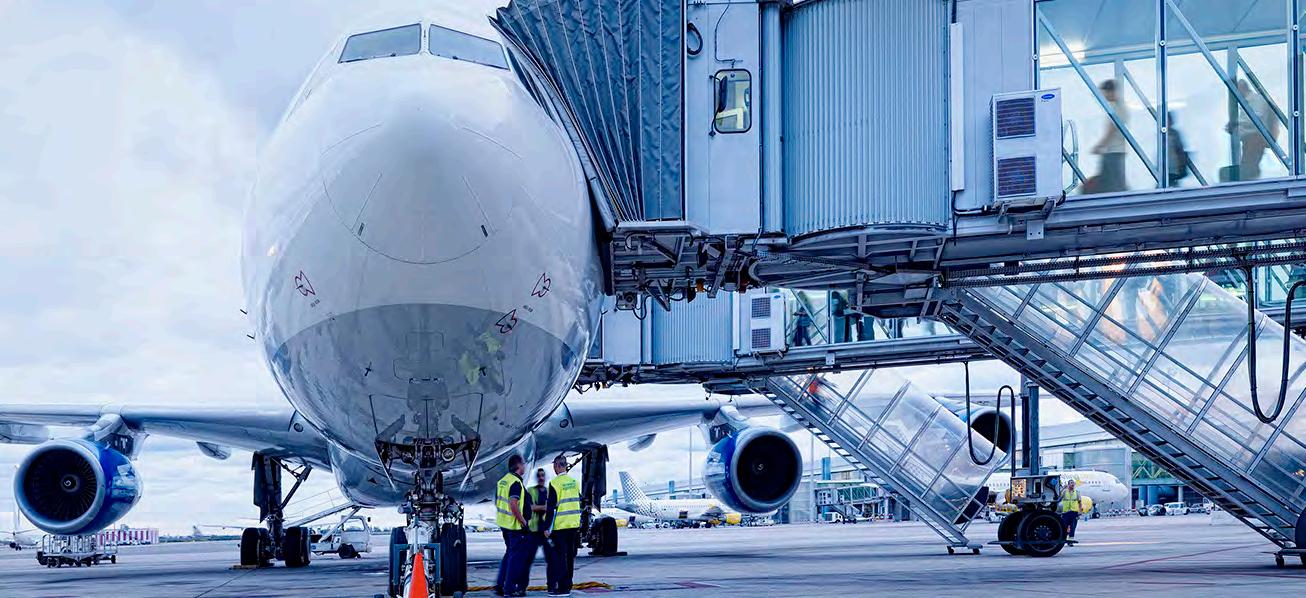
4 minute read
Time to take-off
Subhas Menon, director general of the Association of Asia Pacific Airlines (AAPA), argues that more needs to be done to reboot aviation and let the world fly again.
Airlines look set to record net losses of $84 billion this year. Costs are declining but airlines are burning cash by the millions every day.
Advertisement
International revenues are not expected to reach 2019 levels until at least 2024. Tourism is expected to decline by at least 80%. The entire aviation system is in shock.
The silver lining is that all stakeholders in the aviation sector are of one voice calling for its urgent restart.
This crisis is not of aviation’s making. Neither is it the only sector affected. Aviation is an enabler of many things, especially global trade, tourism, supply chains and jobs. One job in aviation generates 25 others in the wider economy, while trade and global supply chains depend predominantly on aviation.
Aviation can also drive the global recovery. Yet more than six months into the pandemic, most international flights remain grounded by border closures even as lockdowns are gradually eased.
Hopes that international air travel would gradually return in the second half of 2020 proved premature as governments direct attention to fighting resurgent domestic infection. Whilst there have been discussions about air corridors, travel bubbles and green lanes, such initiatives have so far failed to take off due to their impractical requirements and inability to scale up to meet passenger expectations.
Progress is being made on testing, contact tracing, wearing of masks and social distancing, which are now being implemented by governments across the world. Such measures are also being applied in the context of international air travel, but these are neither consistent nor co-ordinated amongst States.
The last time there was no civil aviation was in 1945. Then, the world created ICAO to start civil aviation. As aviation ground to a halt in 2020, ICAO, which celebrated its 75th anniversary on August 15, again came to the rescue with guidance on aviation public health measures.
ICAO issued its ‘Take Off’ Guidance in June 2020 to anchor co-ordinated efforts to restart international air travel. However, progress has been negligible as governments are preoccupied with community transmission.
We cannot wait indefinitely to reboot aviation. It will take time for COVID-19 to abate and for the world to discover a vaccine or cure. We must learn to adapt to the ‘new normal’ and recreate an aviation network by applying science to mitigate identifiable risks to travellers and crew.

Cross-border flights can only resume in earnest when governments act in concert to apply measures that are safe but practical to facilitate rather than deter travel.
Onerous quarantine requirements applied on both ends of a flight, are a primary impediment to travel. The public health response must reassure travellers that standardised and sensible precautions based on prudent medical advice have been adopted without adding unproven or inconvenient measures like quarantines or caps on visitor numbers.
The current patchwork of blanket containment measures for overseas travel, only serve to suppress demand while proven and pragmatic policies will restore confidence in air travel.
Europe has allowed cross border travel without quarantine since June 15 and more recently with third countries. Applying a 14-day record of cases per 100,000 of population (given that people can be infectious for up to 14 days), the European Centre for Disease Prevention and Control (ECDC) has classified countries according to their epidemiological profile for virus containment.
Countries that have the same or lower level of cases as well as adequate public health facilities including testing, contact tracing and health care, are the ones with whom Europe is resuming cross border travel.
Such objective basis to address identifiable risks to allow flights to resume between pairs of States, could be a way forward. ACI and IATA recommend that countries accept a negative COVID-19 test 48 hours before travel instead of quarantines.
Surveys of frequent travellers indicate that travellers are ready to fly when the virus spread is contained. They are also prepared to put up with testing, screening, face masks and continuous sanitisation during the travel process, to fly again. But they express a strong aversion to quarantine requirements.
Since Asia-Pacific first encountered COVID-19 and is first to witness containment, it is logical that flights could restart in the region. If governments could prioritise jobs, tourism and trade to resume aviation, it will mark a turning point for global mobility as well as economic and social development in the region.
Besides, how long can governments prop up the industry? Better to allow airlines to earn their own keep. Airlines need to fly their planes and serve air travellers to make ends meet while contributing to tourism, trade, economic and social revival.
The same goes for airports and tourism establishments. Enabling aviation and giving its stakeholders a fair chance to sustain their resources, cover their costs by generating cash flow and see to their own recovery would also usher a global recovery even if COVID-19 still hovers.
The virtual world may have overtaken our reality, but travel, trade and tourism are very tangible activities. Staycation and self-sufficiency will only make the world poorer. Cross border travel, tourism and trade can start a virtuous cycle of social and economic healing from a virus that has brought the world to heel.
This respiratory disease that has the world gasping for breath indefinitely, needs a pragmatic, progressive and proactive response, collectively by all in the aviation ecosystem, including governments.
Restarting aviation could breathe new life into the global economy and society thereby leading the way for an effective way of life in the new normal. Let airlines take off, so that the world can fly again.







